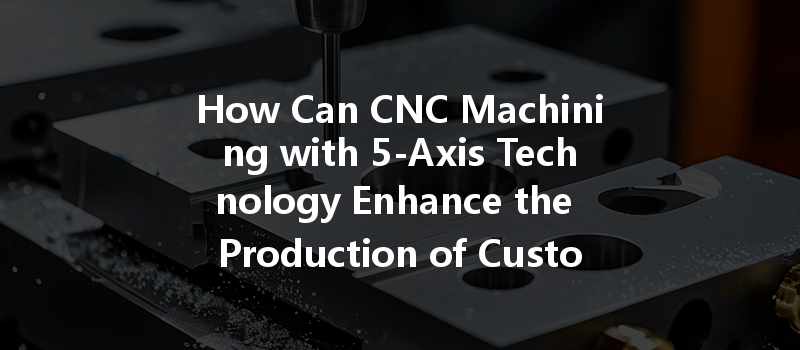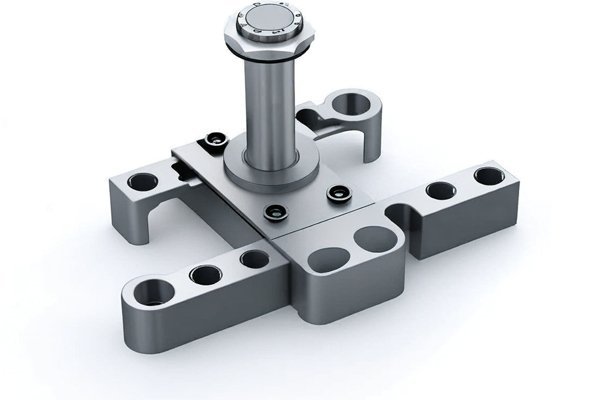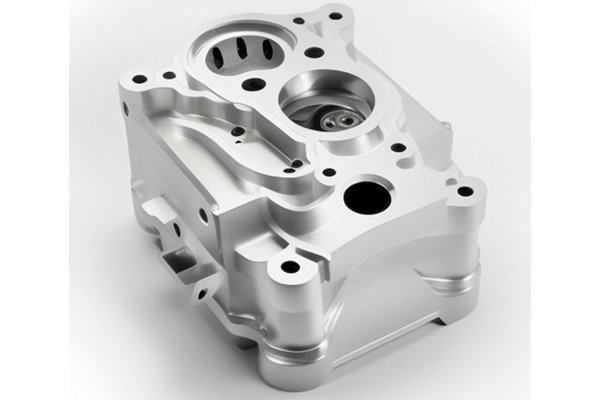: A Revolution in Precision Engineering
Did you know that the global CNC machining market was valued at approximately $63 billion in 2020 and is expected to grow at a compound annual growth rate (CAGR) of 5.6% from 2021 to 2028? This staggering growth reflects the critical role that CNC (Computer Numerical Control) machining plays across various industries, especially in the production of custom metal parts. Among the most sophisticated and versatile methods is 5-axis CNC machining, a technology that has revolutionized precision manufacturing.
In this extensive blog, we will delve into how 5-axis CNC machining enhances the production of custom metal parts, covering essential aspects such as its working mechanisms, benefits, applications, and case studies demonstrating its effectiveness. By the end of this article, you will have a comprehensive understanding of why adopting 5-axis technology is a game-changer for manufacturers, engineers, and designers alike.
What is 5-Axis CNC Machining?
CNC machining employs a computer-controlled system for various manufacturing processes, including milling, turning, and drilling. Traditional CNC machines operate on three principal axes: X (side-to-side), Y (front-to-back), and Z (up-and-down).
5-axis CNC machining, however, adds two additional rotational axes, allowing for more complex and intricate part geometries. This multi-axis functionality enables the machine to approach the workpiece from virtually any direction, increasing versatility and improving precision.
The Mechanism Behind 5-Axis CNC Machining
To fully appreciate the advantages of 5-axis CNC machining, it’s crucial to understand how it works:
By combining these movements, 5-axis machining can obtain complex shapes and maintain accurate dimensions without repositioning the workpiece, unlike 3-axis machining.
Precise programming is essential to maximize the machine’s capabilities. The CAD (Computer-Aided Design) files are converted into tool paths through CAM (Computer-Aided Manufacturing) software, optimizing the overall machining operation.
The ability to access multiple sides of a workpiece without repositioning significantly reduces setup time and minimizes errors, making the process more efficient.
Why Choose 5-Axis CNC Machining for Custom Metal Parts?
Choosing 5-axis CNC machining for producing custom metal parts offers numerous advantages that can directly impact your manufacturing efficacy, cost, and product quality.
With five independent axes, machining operations can achieve higher precision than traditional three-axis machines. The tight tolerances in 5-axis machining reduce the risk of dimensional errors and improve surface finish.
In traditional machining, a workpiece often requires multiple setups for different angles. With 5-axis machines, operations that would normally need several setups can be completed in one go, drastically shortening turnaround times.
Industries such as aerospace, automotive, and medical devices often require parts with complicated shapes. 5-axis technology allows for deep cavities, intricate cuts, and detailed features that other machines would struggle to create.
The ability to position the cutting tool optimally reduces tool wear. Consequently, this leads to longer tool life and reduces the frequency of tool changes, providing cost savings in the long run.
5-axis CNC machining is advantageous in reducing cycle times. Processes can often cut through several layers at once, optimizing material removal and increasing production rates.
Applications of 5-Axis CNC Machining
5-axis CNC machining proves invaluable across a range of industries. Here are a few key applications:

The aerospace sector demands high precision, particularly when manufacturing turbine blades, structural components, and other intricate parts. 5-axis machines excel in producing these components with exacting tolerances.
Precision healthcare devices like implants and surgical tools benefit from the accuracy of 5-axis machining. The complex geometries required for these devices can be achieved without unwanted jigging.
The automotive industry employs 5-axis machines for rapid prototyping and production of parts such as engine blocks, transmission housings, and custom fittings, all of which require high precision.
Manufacturers of heavy machinery use 5-axis CNC machining to create custom components without compromising on quality or timeline.
Designers in various creative fields use CNC machining for custom designs, art pieces, and prototypes, showcasing the technology’s versatility beyond traditional engineering applications.
Key Considerations When Choosing 5-Axis CNC Machining
While the benefits of 5-axis CNC machining are compelling, several factors should be considered before adopting this technology:
Case Studies: Success Stories in 5-Axis CNC Machining
To illustrate the practical advantages of 5-axis CNC machining, let’s explore a few success stories:
A leading aerospace component manufacturer faced challenges in producing complex turbine engine parts within stringent tolerances. By transitioning to a 5-axis CNC machining operation, they reduced production time by 30% and improved part accuracy by 20%. The enhanced precision also minimized waste material, leading to cost savings in raw material procurement.
A medical device company sought a more efficient process for fabricating custom surgical instruments. Implementing 5-axis CNC machining streamlined their production cycle, allowing them to produce high-quality, precision instruments within tight timelines while adhering to the strict regulatory standards of the healthcare industry.
An automotive parts supplier leveraged 5-axis CNC machining to enhance their prototype development process. By efficiently producing complex component designs, they reduced their time-to-market by 40%. The transition not only attracted new clients but also positioned them as leaders in innovative automotive manufacturing.
: Embracing the Future of Manufacturing
As we have explored in this extensive blog, CNC machining with 5-axis technology is a significant advancement in the world of custom metal parts production. Its ability to enhance precision, reduce setup times, tackle complex geometries, and increase efficiency makes it a vital asset for manufacturers across various sectors.
Understanding the mechanics, benefits, applications, and success stories related to 5-axis CNC machining can empower you to make informed decisions for your own projects. Whether you are a manufacturer, engineer, or designer, it is crucial to consider how adopting this technology can impact your production capabilities and competitive edge.
As industries continuously evolve, the importance of precise and efficient manufacturing processes cannot be overstated. Embracing 5-axis CNC machining could be the key to unlocking unparalleled efficiency and creativity in custom metal part production. Therefore, it’s worth considering how it fits into your operations, ensuring you remain at the forefront of technological advancements in manufacturing.
With ongoing innovations in CNC machining, including the integration of artificial intelligence and machine learning, the future looks promising. Now is the time to embrace such changes, ensuring your operations can adapt to ever-growing industry demands and maintain competitive advantage.






